At any car show around the world, major automakers will unveil different styles of concept cars. Some concept cars may catch the eye, while others may initially seem “boring” to some. The beauty of car styling is highly subjective, even the most beautiful and the ugliest cars share many design elements. The key lies in placing the appropriate design elements in the right type of vehicle. This article will summarize 15 classic automotive design elements.
1. Chrome

Chrome-plated Bugatti Veyron
Chrome-plated bodies have a long history in automobiles and are now widely used in almost all vehicles. It can transform a plain body into something striking and add the finishing touch to already powerful supercars.
2. Whitewall
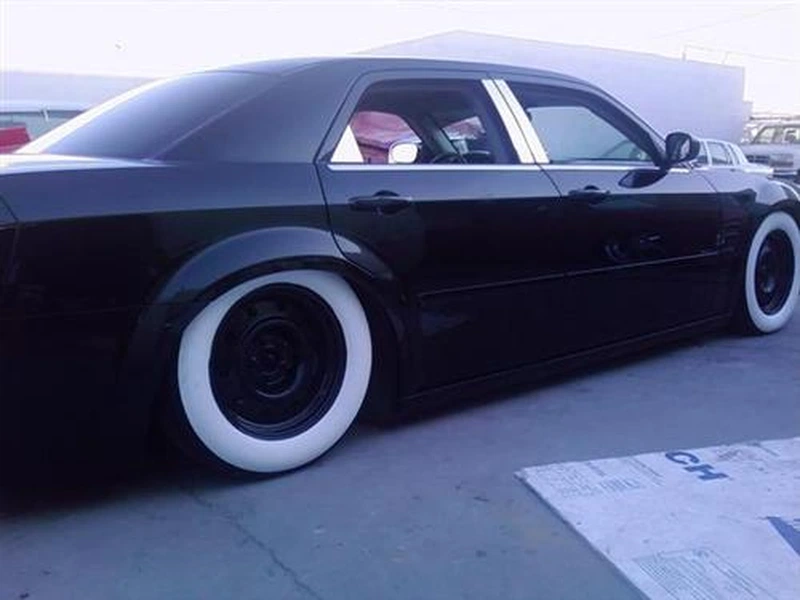
Tires At one time, almost all car tire walls were white, not because white symbolized elegance, but because the rubber used was naturally white. Whitewall tires emerged due to cost differences between processed “black rubber” and regular white rubber. Whitewall tires have since faded away with advancements in rubber vulcanization, but designers now use white materials to decorate tire edges as a historical homage.
3. Fins

Fins became popular in the 1950s, adding an aerodynamic aesthetic to cars reminiscent of rockets and jet planes. This design symbolizes humanity’s dream of flight, embodied in automobiles. Fins were seen on numerous cars at the 2006 Woodward Dream Cruise car enthusiast gathering.
4. Whale Tail Spoiler
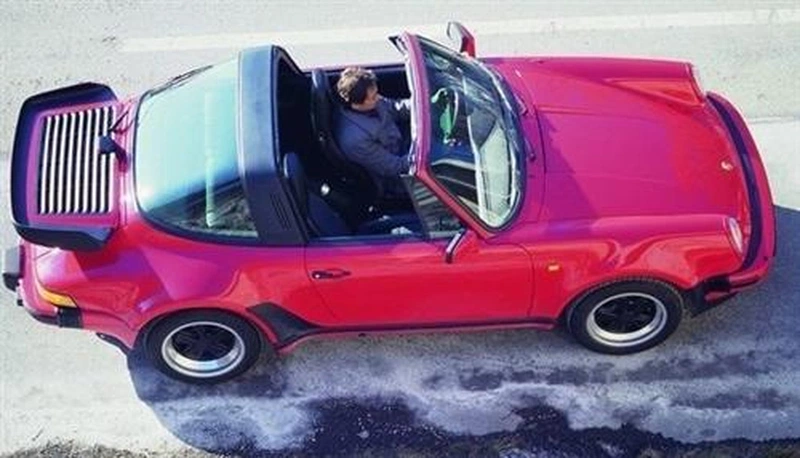
Porsche 911 Turbo
The birth of wings and spoilers aims to address the issues of airflow and lift force. The various types of wings we have seen all share a common feature: a narrow surface that is mounted away from the body horizontally (if the wing is mounted closely to the body, it serves a decorative purpose and functions more like a spoiler, which is different.) The main function of a wing is to increase downforce, so its shape must resemble an upside-down wing. This design causes the airflow passing through the bottom of the wing to move faster than that passing through the top, resulting in downforce. Another method to generate downforce is to slightly tilt the front of the wing downwards. Although this design creates greater drag than a horizontal wing, it offers more flexibility in adjusting the amount of downforce.
Spoilers and air diffusers solve airflow and lift problems. The whale tail spoiler on the Porsche 911 Turbo was a classic aerodynamic addition, becoming synonymous with the late 80s model.
5. Side Blade Structure

Audi R8 e-tron
The side blade design, exemplified by the Audi R8 e-tron, provides practical functionality by enhancing engine performance through efficient airflow and reducing engine compartment temperature.
6. Side Portholes
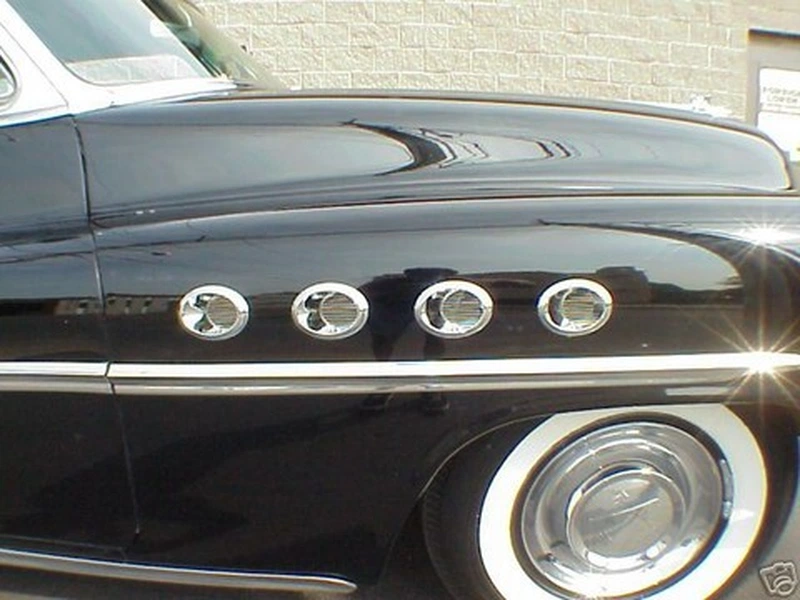
Side portholes were seen on 1940s and 1950s Buick models. Initially intended for airflow into the engine compartment, engineers later realized their limited impact as engine cooling technology advanced, leading to their discontinuation.
7. Installation of evaporative cooler on car windows

When the entire automotive industry was still unsure how to convert freon into cooling air, these evaporative coolers installed on car windows were very common. Through a simple thermodynamic principle, the liquid tank installed on the window edge is filled with liquid water. The evaporative cooler evaporates the water, drawing water from the tank, and since evaporation is an endothermic process, continuously evaporating water from the tank provides cool air to the interior of the car.
As seen in the illustration, these evaporative coolers installed on car windows resemble missile launchers, with a very large volume.
8. Dual dome roof
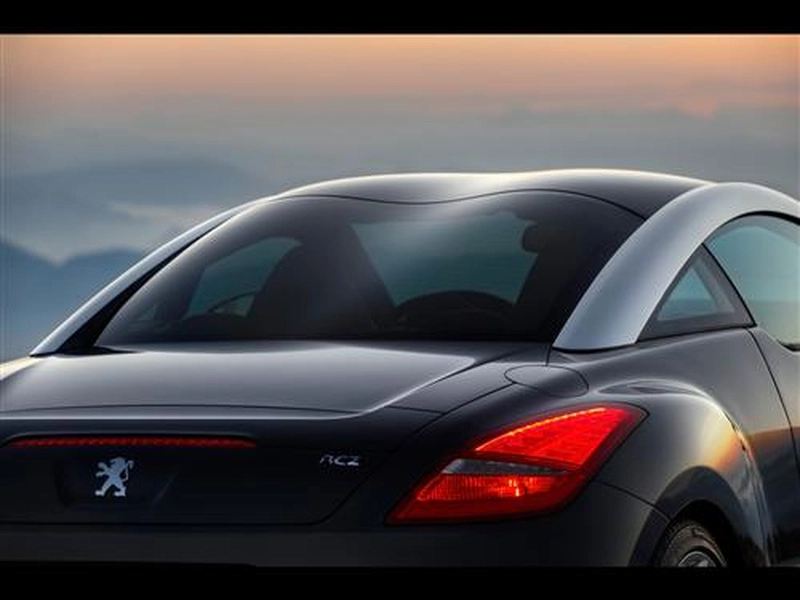
This is another design element that is open to interpretation, some people find this type of roof design novel, resembling the back of a camel when viewed from the front or back, exuding a futuristic style. However, some people do not like this apple-shaped design, feeling like the roof has been split open.
9. Split rear window

For the design of split rear windows, there are also two schools of thought. Some believe that this design is very impractical, blocking light and causing poor lighting inside the car. Others greatly appreciate its beautiful appearance. (Compared to the dual dome roof, there are more admirers of the split rear window)
10. Hofmeister kink
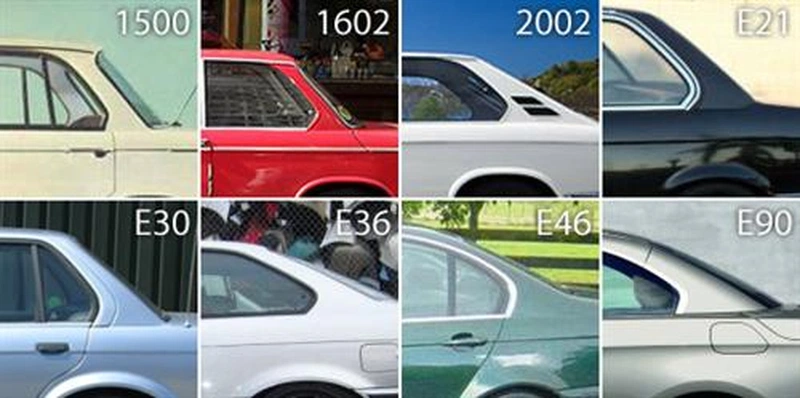
This is a classic design introduced by BMW in the BMW 1500 model in 1961 and has been continued to this day, with a small kink near the C-pillar close to the rear window. This kink design can make the vehicle look more sporty. A few years after the BMW 1500 was launched, this design was also known as the “Hofmeister-Knick” (Hofmeister kink), in honor of the body designer who popularized this style.
11. Suicide doors – Gullwing doors
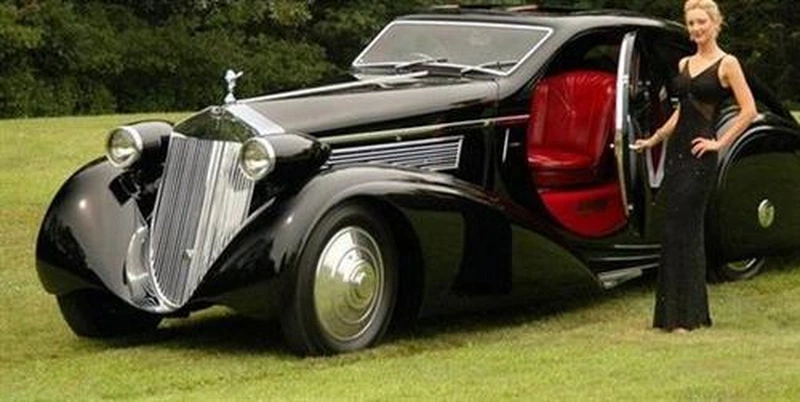
Generally, the designs on concept cars are not applied to production models. However, gullwing doors are an exception. This design makes entering and exiting the vehicle easier. However, gullwing door design is very complex. Due to the uniqueness of this design, there is no B-pillar for the doors, and these doors usually have the rear door locks designed on the front doors, so when opening, the front door must be opened first, and when closing, the rear door must be closed first.
Why are they called “suicide” doors? This is because the 1925 Rolls-Royce Phantom was equipped with doors that opened backwards. While they provided ample space for entry and exit, if the doors were not closed properly, the reverse airflow while driving could open the doors, posing a danger, hence the name “suicide” doors.
12. Gullwing doors

Similar to scissor doors, gullwing doors are often seen on concept cars and have been incorporated into some production cars. The personality of gullwing doors, a design used on sports cars, has evolved over the years to become a symbol of classicism and romance. The gullwing door became a benchmark in car design thanks to Mercedes-benz‘s 300SL Gullwing Coupe introduced between 1954-1957.
The first implementation of upward-opening doors was seen in Mercedes’ classic 300SL sports car. Mercedes had no choice but to invent this design to ensure high chassis rigidity for the 300SL. Due to the large parallel beams on both sides of the chassis, conventional doors couldn’t be installed. In desperation, chief designer Rudolf Uhlenhaut came up with the idea of the upward-opening door, also known as the gullwing door.
13. Sliding doors
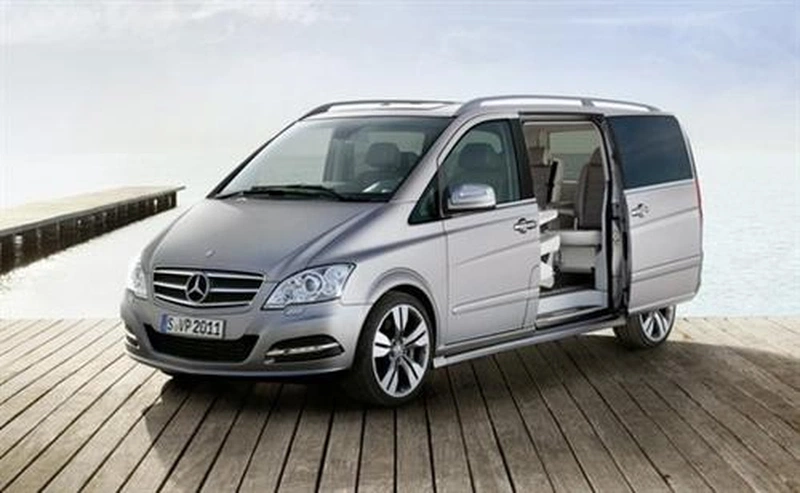
Sliding doors are common in vans and commercial vehicles, though they may not be associated with luxury or innovation. This design has been utilized since the 20th century, similar to the principles of folding doors in houses. Initially considered unsafe, proper installation methods were later identified, leading to the continued popularity of sliding doors.
14. Forward cab placement
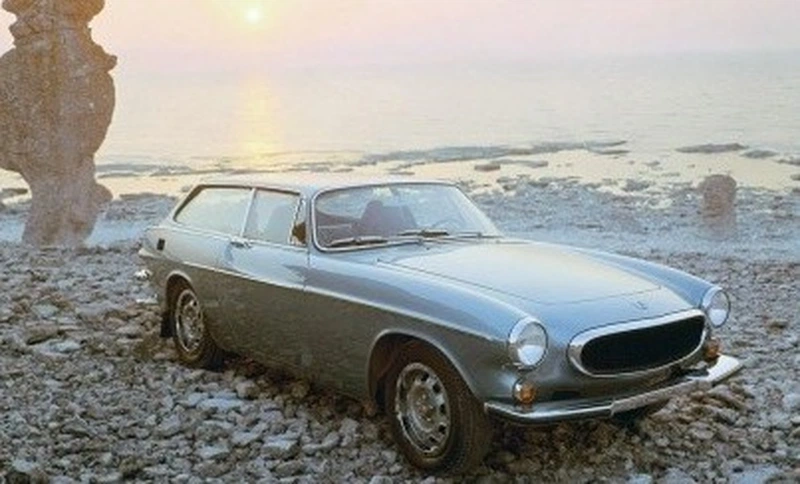
This design is often found in trucks or commercial vehicles where the driver’s seat is positioned directly above the front axle. In some regular American cars, this design is used to increase interior space. Interestingly, the 1975 AMC Pacer achieved the same goal of expanding interior space in the opposite way by moving the driver’s seat backward and increasing the trunk space, resembling the initial concept of the pickup truck.
15. Convertible seating

Though convertible seating is a classic style in appearance, practicality might not be its strongest suit. Sitting at the back might feel like installing an ejection seat in the car – a person in that position would experience unprecedented turbulence. Furthermore, if the weather is “nice,” you might get a free shower along with some sunbathing.

